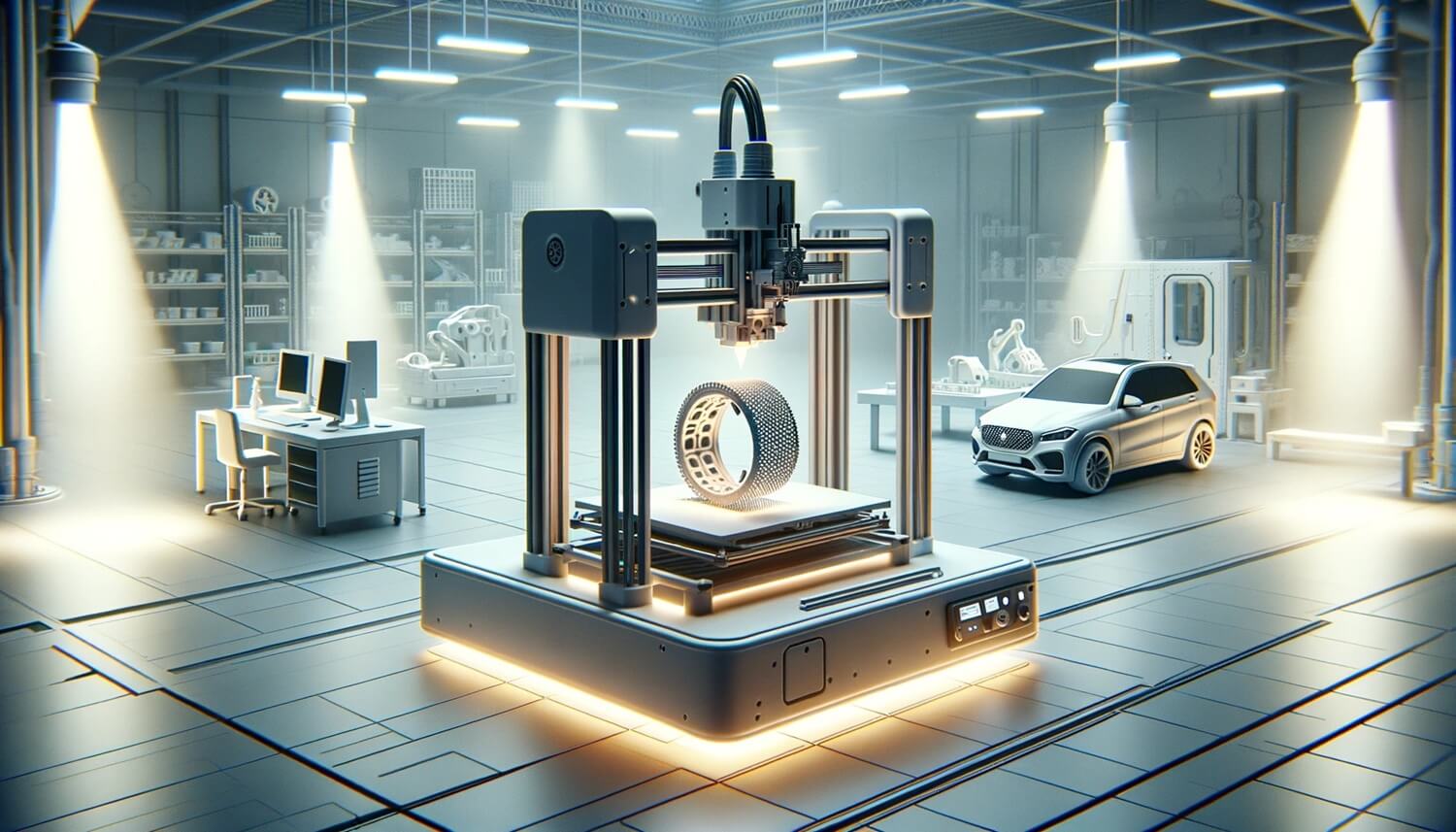
Explore the impact of 3D printing in transforming automotive manufacturing. Discover how it accelerates design, enhances customization, and drives innovation in vehicle production.
3D printing is reshaping the global automotive industry by enabling rapid prototyping, enhancing the production of essential car parts, and facilitating the creation of nearly complete vehicles. This innovation is attracting attention from major corporations like Mitsubishi Chemical and BASF, who recognize the significant business potential of utilizing FDM printing technology in vehicle manufacturing.
3D Printing's Adoption in Automobile Manufacturing
Car manufacturers are increasingly adopting 3D printing, using it to bring innovative designs and engineering solutions to life. This technology is enhancing the automotive sector by expanding the range of engineering possibilities and streamlining manufacturing processes. Designers and engineers are leveraging 3D printing to experiment with bold ideas, optimizing production and pushing the boundaries of what's possible in car manufacturing.
1. Advancements in 3D-Printed Automotive Components
3D printing in the automotive industry has evolved beyond rapid prototyping to manufacturing final car parts. Research indicates this segment could generate $9 billion by 2029. Volkswagen leads in adopting this technology for end-use parts, with BMW and Ford also making significant advancements. This shift underscores the growing reliance on 3D printing for its efficiency and innovation in car manufacturing.
2. Innovative Materials in Automotive 3D Printing
The automotive industry is increasingly using FFF (Fused Filament Fabrication) in 3D printing, known for its versatility with high-performance materials similar to plastics. This method allows for the in-house creation of essential parts, ensuring production continuity, reducing dependency on external suppliers, and optimizing manufacturing processes.
Simplifying Tool Creation with 3D Printing
In the world of automotive innovation, the quest for enhanced vehicle performance is relentless, often necessitating the development of specialized, intricate parts. 3D printing stands out as a pivotal solution, enabling the precise design and fabrication of parts tailored to specific vehicles or drivers' needs.
Consider the realm of motorsports, where race cars and motorcycles are meticulously engineered for peak track performance. Here, the ability to swiftly alter and reproduce new components is crucial. This is exemplified by the Moto2 motorcycle racing team, TransFIORmers, which has embraced 3D printing for its groundbreaking front suspension system. This technique allows for the rapid creation of a unique titanium suspension component, resulting in a part that is 40% lighter and significantly stiffer than those produced by traditional methods, showcasing the transformative potential of 3D printing in custom tooling and design innovation.
3D Printing Innovations in the Auto Industry
1. Fire-truck Manufacturing Innovations with 3D Printing
Bocar, a manufacturer of fire service vehicles, leverages industrial 3D printing to develop plastic sub-assembly prototypes, significantly reducing development time. Partnering with 3DGence, they've created a full-scale model of an extruded collector, streamlining production by eliminating manual welding. This innovation leads to more precise hydraulic systems with lower failure rates.
2. Crafting a Racing Car with 3D Printing
Polish students are advancing the automotive industry, notably in electromobility, by constructing an electric racing car with 3D printed parts. The car showcases the latest engineering techniques, including a fire-resistant battery casing made with a 3DGence INDUSTRY F340 printer. This technology also facilitated the creation of aerodynamic components, demonstrating the capabilities of 3D printing in producing essential racing car elements.
Navigating the Future: Key Factors Shaping Automotive Innovation
The automotive industry is at a pivotal crossroads, driven by a blend of technological advancements and societal shifts. At the heart of this transformation is the growing importance of software in vehicles, which extends beyond mere functionality to become a core component of automotive innovation. This evolution demands a rethinking of organizational structures, development processes, and strategic planning to accommodate the software-centric future of automotive design and engineering.
Emerging technologies are playing a crucial role in reshaping the industry. The advent of self-driving cars, the integration of the Internet of Things (IoT) within vehicle systems, and the push towards alternative energy sources like electric vehicles (EVs) are not just technological leaps but catalysts for new service models and business strategies. These innovations pave the way for personalized and shared mobility solutions, challenging traditional automotive business models to evolve in response to a connected and sustainable mobility landscape.
Environmental concerns and regulatory pressures are accelerating the shift towards electrification, highlighting hybrid, battery, and fuel cell electric vehicles as key to decarbonizing transport. This shift is driven by the urgent need to reduce greenhouse gas emissions and mitigate the effects of climate change, coupled with the depletion of fossil fuel resources. As the industry moves towards more sustainable solutions, the emphasis on electric vehicles underscores a commitment to innovation that aligns with environmental sustainability.
Moreover, the rapid development of vehicle electrification and artificial intelligence signifies a leap towards smarter, more efficient vehicles. This trend towards electrification, spurred by stringent emissions standards, is complemented by the increasing incorporation of AI and advanced computing in vehicles, marking a transition to more intelligent, autonomous, and eco-friendly transportation options.
Facing these dynamic changes, the automotive industry is embracing collaboration and interdisciplinary research as essential strategies for fostering innovation and addressing the complex challenges of integrating new technologies. This approach emphasizes the importance of cross-sector partnerships and the sharing of knowledge and resources to drive the industry forward in a competitive and ever-evolving global market.
In summary, the automotive industry's journey towards rapid innovation is marked by the convergence of software development, emerging technologies, environmental sustainability, and intelligent systems. Navigating this landscape requires agility, forward-thinking, and collaboration to harness the potential of these advancements and redefine the future of mobility.
